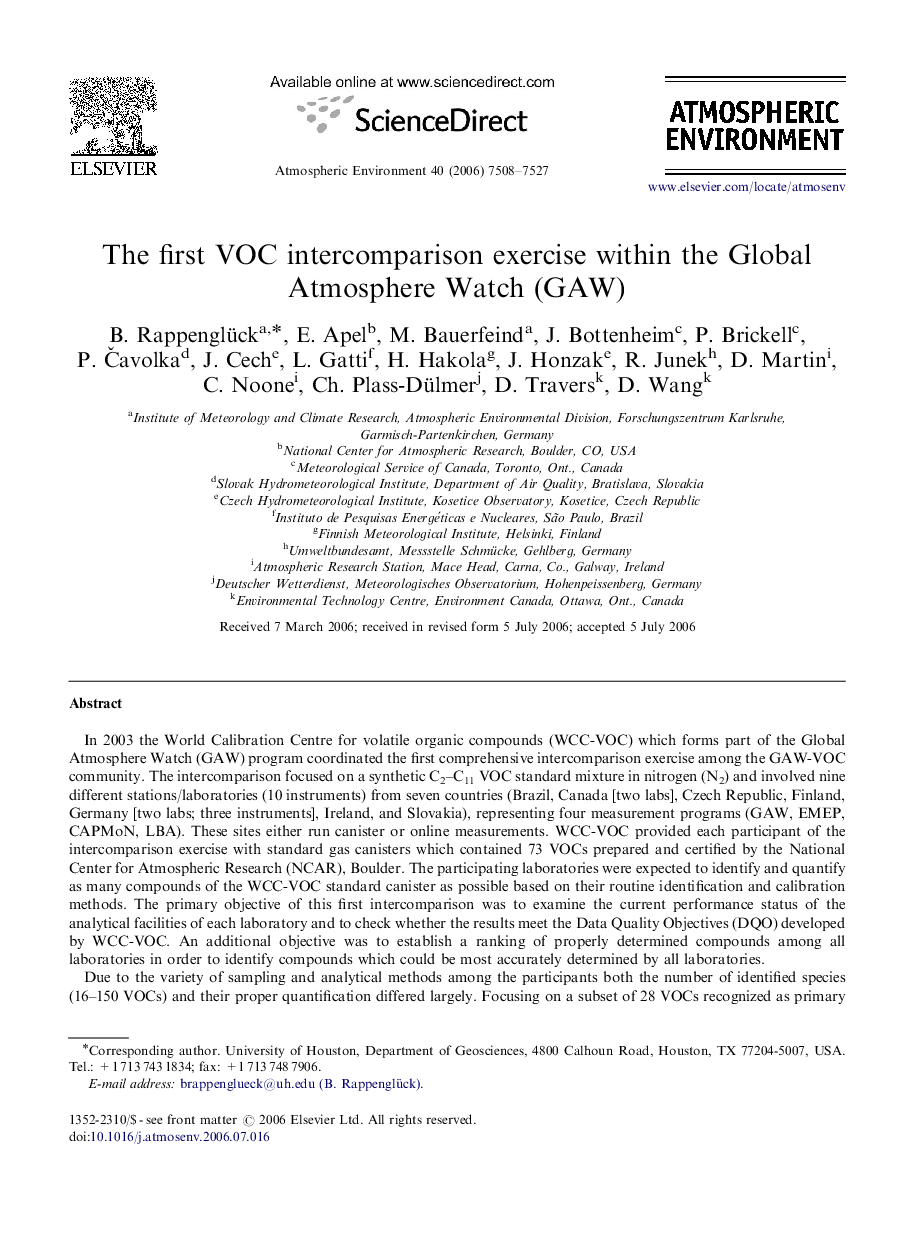| Article ID | Journal | Published Year | Pages | File Type |
|---|---|---|---|---|
| 4443201 | Atmospheric Environment | 2006 | 20 Pages |
In 2003 the World Calibration Centre for volatile organic compounds (WCC-VOC) which forms part of the Global Atmosphere Watch (GAW) program coordinated the first comprehensive intercomparison exercise among the GAW-VOC community. The intercomparison focused on a synthetic C2–C11 VOC standard mixture in nitrogen (N2) and involved nine different stations/laboratories (10 instruments) from seven countries (Brazil, Canada [two labs], Czech Republic, Finland, Germany [two labs; three instruments], Ireland, and Slovakia), representing four measurement programs (GAW, EMEP, CAPMoN, LBA). These sites either run canister or online measurements. WCC-VOC provided each participant of the intercomparison exercise with standard gas canisters which contained 73 VOCs prepared and certified by the National Center for Atmospheric Research (NCAR), Boulder. The participating laboratories were expected to identify and quantify as many compounds of the WCC-VOC standard canister as possible based on their routine identification and calibration methods. The primary objective of this first intercomparison was to examine the current performance status of the analytical facilities of each laboratory and to check whether the results meet the Data Quality Objectives (DQO) developed by WCC-VOC. An additional objective was to establish a ranking of properly determined compounds among all laboratories in order to identify compounds which could be most accurately determined by all laboratories.Due to the variety of sampling and analytical methods among the participants both the number of identified species (16–150 VOCs) and their proper quantification differed largely. Focusing on a subset of 28 VOCs recognized as primary GAW target compounds the results show that the DQOs for repeatability are met in most cases. However for the deviation from the WCC-VOC reference values the picture is different. For some VOCs the concentrations differed significantly among the different laboratories. In terms of both uncertainty and repeatability a significant number of atmospherically relevant VOCs (e.g. propane, propylene, isoprene, and benzene) are properly determined by most labs. However, difficulties occur with other important VOCs (e.g. acetylene, i-pentane, toluene). From this subset of VOC results it appears imperative to strengthen harmonization procedures particular with regard to real air samplings. These processes have been initiated and include more frequent intercomparisons also covering ambient air samples, individual performance audits, and a future networkwide calibration standard.
